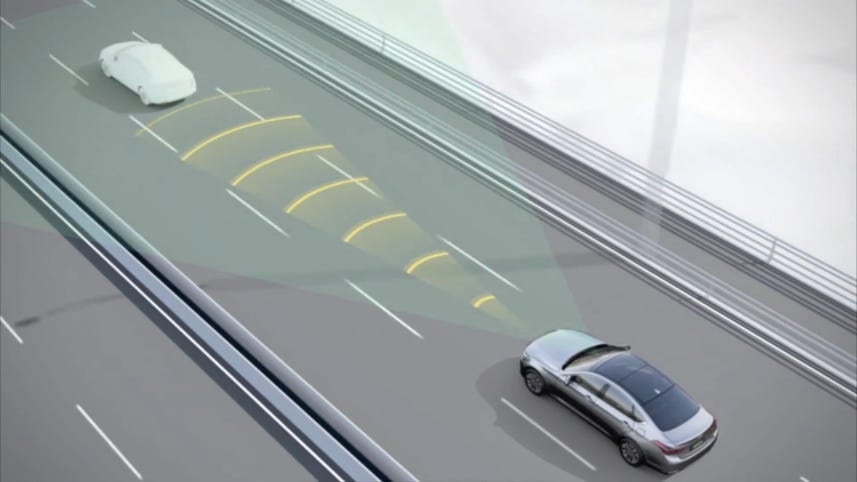
[MUSIC]
Just as we expect new cars to have mirrors, parking brakes, seat belts, ABS and air bags regardless of their price or type, we may soon expect the same of automatic emergency braking.
Automatic emergency braking will apply partial braking and alert the driver of a potential collision.
Ten auto makers who are responsible for more than half the cars and light trucks sold in the US have pledged to make the technology available across their line, which certainly points down the road to it eventually being required
Now, how and when AEB goes mainstream will be worked out with the US National Highway Traffic Safety Administration and the Insurance Institute for Highway Safety.
They're consulting now.
And by the time they get that done, it'll be hard for all the other car makers to stay out.
The US New Car Assessment Program, which addresses standards for many systems, includes ten formal tests of safety gear.
But automatic emergency braking is not yet one of them.
As you drive, collision prevention assist is comparing your speed to vehicles or objects ahead.
AEB is just another term for a tech you may already know.
Subaru calls it pre-collision braking system.
Acura and Honda, Collision Mitigation Braking System, and Mercedes dubs it the wordy, Distronic Plus with Pre-Safe Brake.
[MUSIC]
But all of these currently live in the world of a nice to have option.
Not common or standard.
The way it works is cameras, lasers and ultrasonic sensors constantly watch the space ahead of your car.
And if the process they're connected to determines you're closing on an object moving or still too rapidly and seem to be making no inputs on the brake or steering, the car will break for you.
A car that can see trouble.
And stop itself to avoid it.
Even if it doesn't eliminate the impact, it would lessen its energy.
And if it appears you can not avoid the collision the system engages the features of pre-safe to help prepare the occupants.
The safety and insurance communities have been falling in love with this.
Tech for a few years, making it the early darling of all the active driver assists.
The IIHS has found that cars with this basic tech are associated with up to 35% fewer accident injury claims.
They like paying fewer claims You like not being involved.
Until AEB is required in new cars, it pays to doublecheck if the one you're considering buying has it anyway.
More realities of modern driving revealed now at CNETOnCars.com.
Click on Smarter Driver.
[MUSIC]